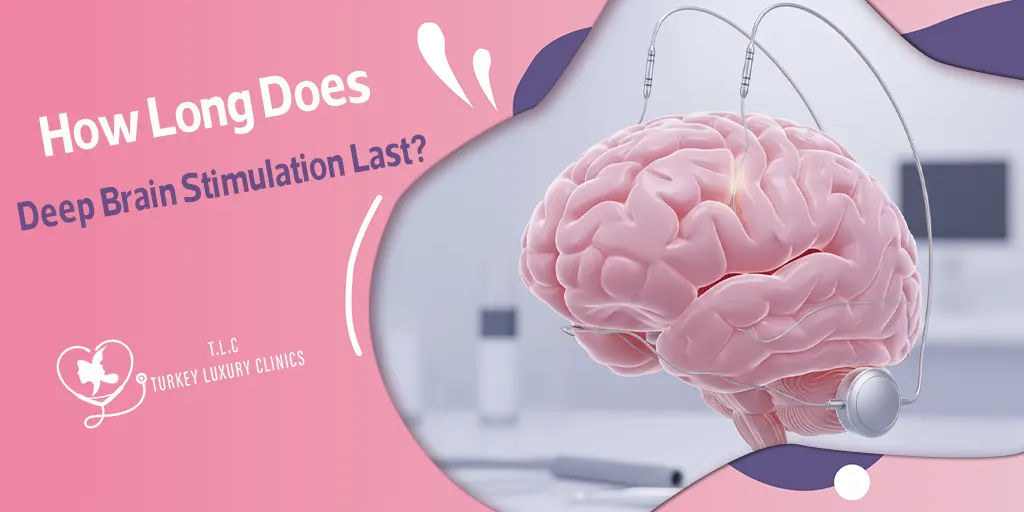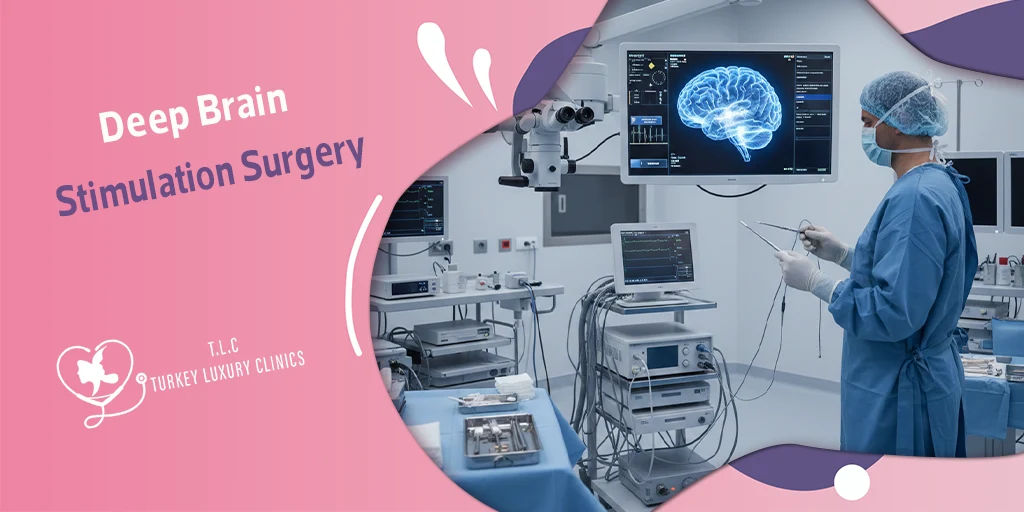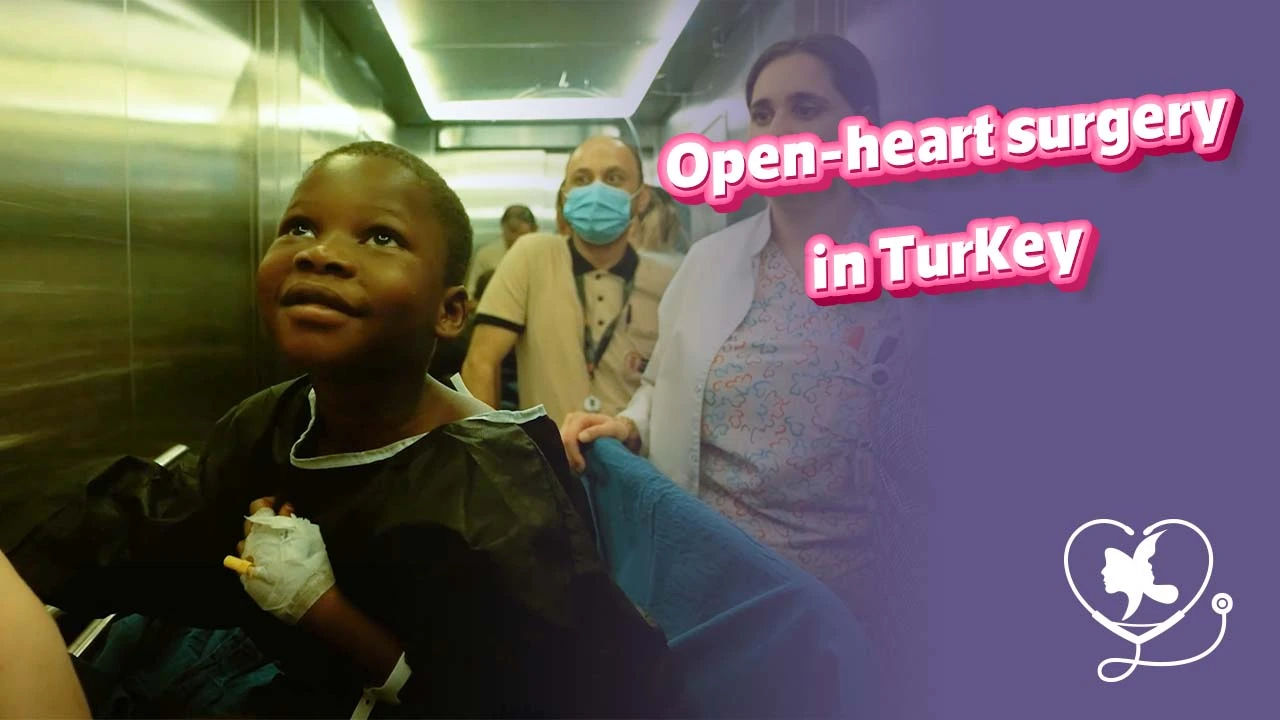- - How Long Does Deep Brain Stimulation Last?
- - Which Symptoms Improve Longest with Deep Brain Stimulation?
- - What to Expect Over the Years with Deep Brain Stimulation
- - Why Deep Brain Stimulation Effectiveness May Decrease Over Time?
- - How Long Does DBS Last for Rechargeable vs Non-Rechargeable?
- - Factors Influence How Long Deep Brain Stimulation Lasts
- - What to Do When Your DBS Isn’t Controlling Parkinson’s Symptoms؟
- - FAQS About How Long Does Deep Brain Stimulation Last
Deep Brain Stimulation (DBS) has become a standard treatment for people struggling with uncontrolled Parkinson's symptoms, essential tremor, and certain dystonias.
While it is not a cure, DBS can significantly improve daily life, helping patients stay more independent and enjoy everyday activities.
Its benefits can last for many years, but they don’t last forever—so it’s natural to wonder, how long does deep brain stimulation actually last?
In this guide from Turkey Luxury Clinics, we’ll explore how long DBS remains effective, what you can expect over time, the factors that influence its lasting benefits, and practical tips to get the most out of your therapy.
How Long Does Deep Brain Stimulation Last?
Deep Brain Stimulation (DBS) therapy can last about 5 years with non rechargeable batteries and up to 15–20 years with rechargeable batteries, depending on several factors such as the severity of the disease, overall health, the type of symptoms, and how regularly the device is monitored and adjusted.
Rechargeable batteries offer the advantage of fewer surgical replacements, but they require weekly or biweekly charging to maintain therapy.
Non-rechargeable batteries are simpler to manage but typically need replacement every 3–5 years, which involves a minor surgical procedure. Regular follow-up and device programming are essential to ensure the therapy remains effective for the full potential DBS battery life.
Studies and patient reviews show that 96% of people still benefit from DBS at 5 years, 91% at 10 years, and 85% at 15 years. Over time, symptom improvement may gradually decline, with some symptoms lasting longer while others start to decline faster.
Which Symptoms Improve Longest with Deep Brain Stimulation?
Most patients notice symptom relief within a few weeks after DBS activation. However, DBS is less effective for non-motor symptoms such as balance, walking, and speech, which may gradually deteriorate, often 5–10 years after surgery.
In contrast, improvements in tremor and rigidity usually last the longest, often remaining stable for 15–20 years.
Changes in walking, balance, and posture are usually due to the natural progression of Parkinson’s disease, not device failure.
Daily activities and quality of life can remain steady for many years if the disease progresses slowly. Remember, gradual changes in balance over time are normal and not a sign that DBS has stopped working.
What to Expect Over the Years with Deep Brain Stimulation
First Year:
The first year is crucial for programming and adjustments. Neurologists, programmers, and physical therapists work closely with patients to fine-tune stimulation settings. Most patients notice significant improvements in tremor, stiffness, and slowness within the first 3–6 months. Medication doses can often be reduced due to better motor function.
Years 2–5:
Benefits generally remain stable. During this period, patients continue to enjoy steady improvement. Tremors stay controlled, stiffness remains manageable, and—depending on the severity of their condition—many can perform daily activities with minimal assistance. Most describe these years as a phase of returning to meaningful routines: walking with confidence, eating without shaking, and managing personal care more independently.
Years 5–10 and Beyond:
As time passes, regular monitoring becomes more important, both for the battery and for programming needs. Most patients continue benefiting from DBS; however, some begin noticing changes in walking, balance, or posture. These shifts are not due to DBS failing but rather the natural progression of Parkinson’s disease. To maintain the best possible results, patients often need a combination of approaches, including device adjustments, medication updates, physical therapy, and movement-focused rehabilitation.
After 15–20 Years
At this point, Parkinson’s symptoms progress further, and care plans become more personalized. Many patients still rely on DBS because it continues to provide meaningful support, even when additional treatments or therapies are needed.
Why Deep Brain Stimulation Effectiveness May Decrease Over Time?
DBS symptom relief duration for Parkinson's may decrease over time due to a combination of the natural progression of the disease and potential negative effects of long-term stimulation, particularly on gait and balance.
Here are reasons leading to deep brain stimulation benefits to decline overtime:
- Natural disease progression: Parkinson's is a progressive disease, which is why symptoms worsen over time regardless of treatment. DBS is not a cure and does not stop the disease from advancing.
- Limited effect on walking and balance: DBS works very well for the main movement symptoms like tremor, stiffness, and slowness. But its effect on walking and balance is usually weaker, and these issues tend to worsen faster over time.
- Non-dopaminergic pathways: As Parkinson’s progresses, it can affect parts of the brain that no longer respond to DBS. When this happens, walking and balance can worsen even if the device is working normally.
- Long-term stimulation effects: Some research suggests that long-term, high-frequency stimulation may negatively affect walking, which can sometimes be improved by switching to lower frequencies.
- Different effects by stimulation site: The long-term benefits of DBS can depend on which part of the brain is stimulated. For example, patients with electrodes placed in the STN may experience a gradual worsening of walking and balance over time, while those with electrodes in the GPi usually see fewer changes.
How Long Does DBS Last for Rechargeable vs Non-Rechargeable?
DBS battery life plays a role in the DBS durability. Non-rechargeable Deep Brain Stimulation (DBS) batteries typically last 3–5 years, while rechargeable batteries can last 9–15 years or more before the generator needs surgical replacement.
Rechargeable batteries require regular charging by the patient using an external device, whereas non-rechargeable batteries are simpler to manage but require more frequent surgical replacements.
Here is a comparison between Rechargeable vs Non-Rechargeable DBS
Factors Influence How Long Deep Brain Stimulation Lasts
DBS symptom relief duration can last 5–20 years, depending on battery type, brain target, and the progression of Parkinson’s disease. Several factors influence how long DBS remains effective:
- Accuracy of electrode placement: Patients undergo presurgical imaging to determine are best places for electrodes. Precise targeting of brain structures can extend the duration of symptom relief.
- Patient candidacy and qualification: Younger patients, patients with milder symptoms, and those who respond well to medication generally show longer benefit from DBS surgery.
- Device programming and follow-up: Regular adjustments by DBS programming help maximize symptom control, prolong the therapy’s effectiveness, and maintain better overall outcomes.
- Device type: Rechargeable DBS systems generally last longer and reduce the need for surgical replacement. Newer technologies, including adaptive DBS that adjusts stimulation based on brain activity, may further extend battery life by using energy more efficiently.
- Disease progression: Unfortunately, DBS does not stop the progression of Parkinson’s, so some symptoms may still appear or worsen over time. Starting with walking and balance problems and progressing to non-motor issues, such as tremors.
- Symptom severity: Individuals with less severe walking or balance issues tend to experience longer-lasting benefits.
What to Do When Your DBS Isn’t Controlling Parkinson’s Symptoms؟
If your Deep Brain Stimulation (DBS) is no longer effectively controlling Parkinson’s symptoms, the first step is to contact your neurologist. There are several options to restore or maintain symptom control:
- Try adjusting your DBS settings with your: Your DBS uses an implanted pulse generator (IPG) to deliver electrical stimulation to the brain. Sometimes, adjusting settings, voltage, frequency, pulse width, or activating different pre-set programs can improve symptoms without surgery. Regular follow-up helps keep the device optimized for daily life.
- Check if your battery needs replacement: For non-rechargeable systems or when the battery runs low, replacing it can extend DBS effectiveness. Rechargeable batteries also need routine charging, which is part of daily care to maintain therapy.
- Consider medication adjustment under supervision: Parkinson’s medications may need tweaking to cover symptoms that DBS no longer fully controls.
- Supportive therapies can complement DBS beautifully. Physical therapy and regular exercise help maintain walking, balance, and flexibility, while occupational therapy supports your daily activities, helping you stay independent and confident in your routine.
- New or Experimental Technologies: Adaptive DBS or newer-generation devices in clinical trials may provide longer-lasting benefits and more precise symptom control.
- Alternative Procedures: MRgFUS (Magnetic Resonance-guided Focused Ultrasound) can be an option for tremors resistant to medication or not fully managed by DBS.
You may like
Deep Brain Stimulation Cost 2025: Save 60% on DBS Surgery
Is Parkinson’s Considered a Disability?









.webp)
.webp)
.webp)
.webp)

